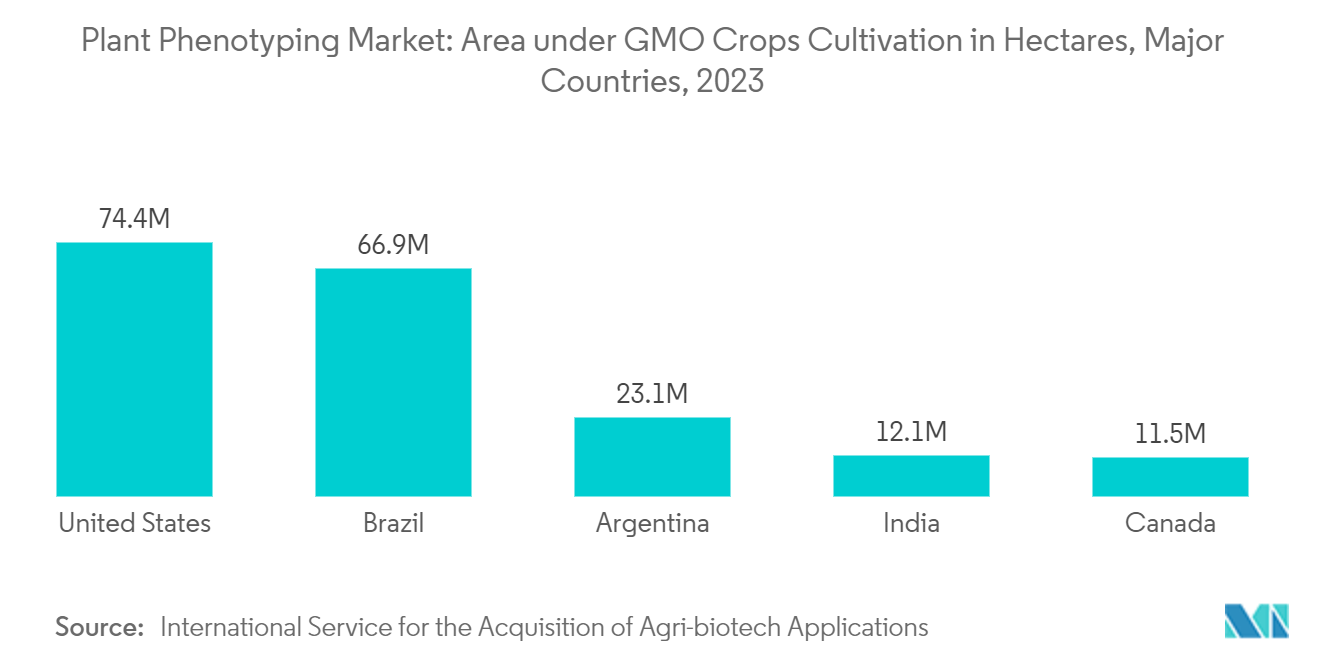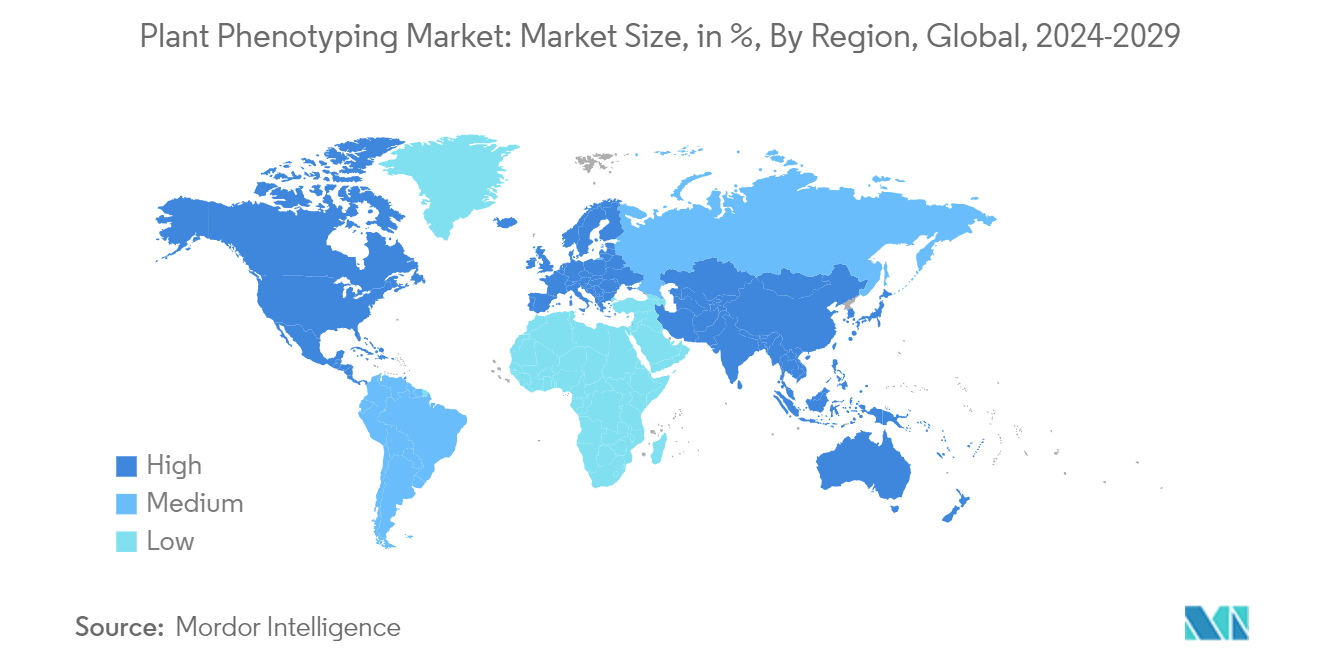Market Trends of Plant Phenotyping Industry
Rising Acreage of Genetically Modified Crops
- The UK's Regulatory Horizons Council, in its Report on Genetic Technologies, emphasizes a significant benefit: farm workers, particularly smallholder farmers, have faced fewer pesticide poisonings due to the reduced pesticide use associated with GM crops. The report highlights that several countries, India included, have gained economic advantages and healthier populations through the adoption of genetically modified (GM) crops. In India, the report notes that insect-resistant GM (Bt) cotton has led to a 50-to-70 percent reduction in pesticide applications, resulting in significant health benefits. Consequently, as acceptance of GM crops grows in mitigating pesticide use and the demand for plant phenotyping has surged, given its role in testing and developing GM crops.
- According to statistics from the International Service for the Acquisition of Agri-biotech Applications, 2023 witnessed a record 206.3 million hectares globally dedicated to GM crops, marking a 1.9% increase from 2022. Cultivation spanned 27 countries, with eleven distinct GM crops. Soybeans lead the GM crop cultivation area, being planted on 100.9 million hectares. Following closely was maize, covering 69.3 million hectares, and cotton, which occupied 24.1 million hectares. The U.S., Canada, India, Brazil, and Argentina took the lead in GM crop acreage, enjoying more lenient regulations than their European counterparts. This trend indicates these nations' intensified focus on GM crop development, particularly using plant phenotyping technologies, in the future.
- Governments are actively revising regulations to integrate genetically modified crops into the agricultural ecosystem. In April 2023, China's Ministry of Agriculture and Rural Affairs (MOA) granted its inaugural safety certificate for plant gene editing, specifically for a high oleic acid soybean developed by Shandong BellaGen Biotechnology Co. Notably, BellaGen stands as China's pioneer in launching industrial-scale plant gene editing. Earlier, on March 20, 2023, Japan's Ministry of Health, Labour, and Welfare, alongside the Ministry of Agriculture, Forestry, and Fisheries, approved a high-starch maize variety. This marked Japan's fourth genome-edited food product, exempted from regulations typically imposed on genetically engineered crops. Such regulatory relaxations from governments are poised to boost the market for plant phenotyping products and services.

Europe Dominates the Phenotyping Market
- Europe has emerged as a frontrunner in plant phenotyping, with numerous institutions under the European Plant Phenotyping Network (EPPN) gaining global recognition. These institutions are pivotal in advancing and applying plant phenotyping methods, including pioneering new technologies and refining data management and analysis tools. Given this momentum, the European research landscape is poised not only to sustain but also to amplify its dominance in this crucial technology. As a result, the region is expected to witness significant market saturation in the coming years.
- The European Union is funding research projects focused on developing new technologies for plant phenotyping. For instance, the PhotoBoost initiative, set to conclude in 2025, aims to significantly enhance the efficiency of photosynthesis in plants. This optimization is leveraging a multidisciplinary approach, incorporating computational biology, metabolic modeling, systems biology, enzyme and pathway engineering, synthetic biology, and multigene transformation, specifically targeting two major C3 crops: potato and rice. The PhotoBoost strategy not only introduces new methods but also refines existing ones to boost photosynthetic efficiency.
- Moreover, the European region hosts key players in the plant phenotyping market, solidifying its position as the dominant market, especially in terms of phenotyping research and services. Increasing research activities across European nations are boosting awareness, subsequently propelling the market for plant phenotyping products and services.


